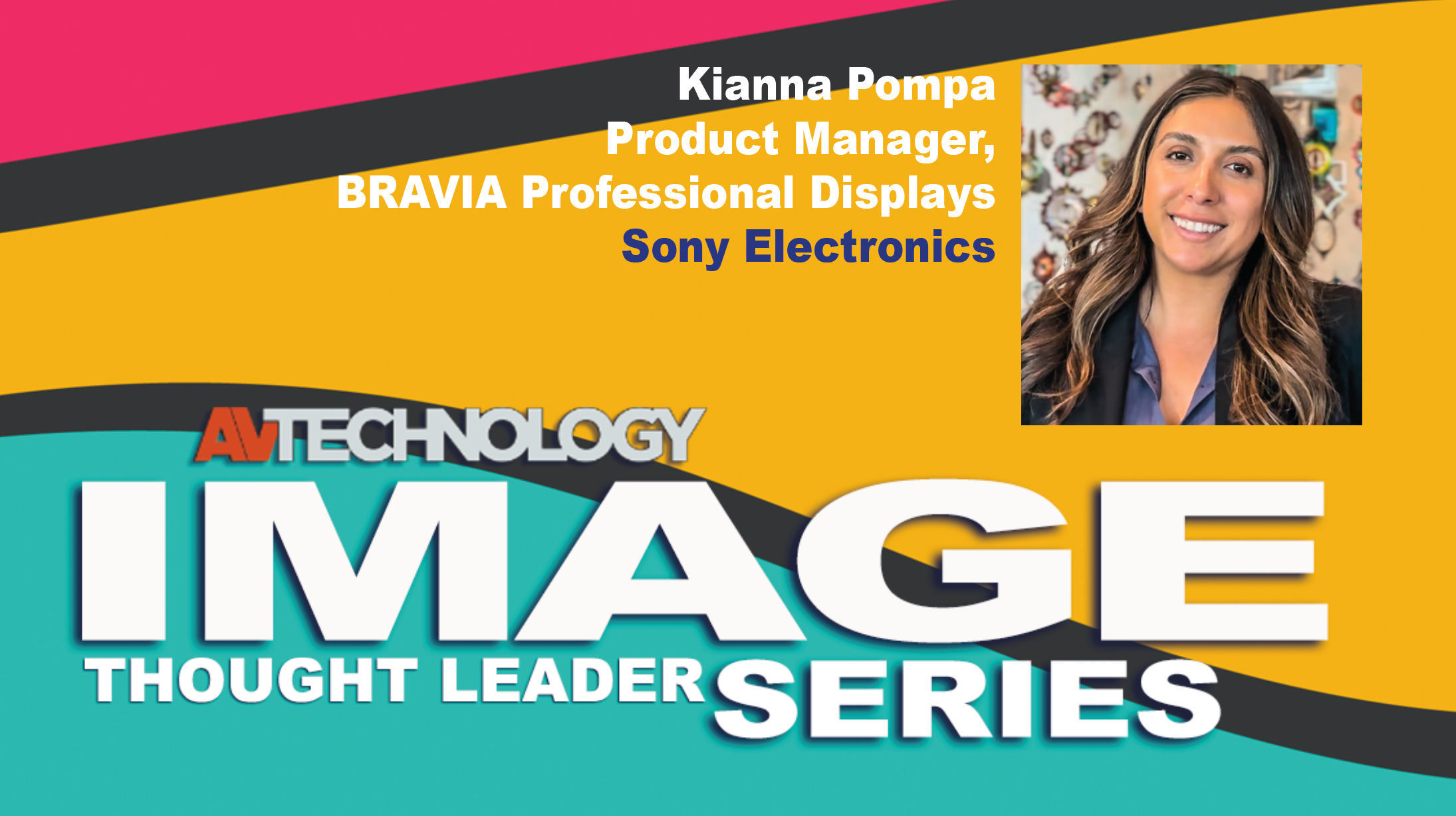AVT Question: Please share your insight on what end users need to know about today’s displays, applications, content, cost of ownership, flexibility, and what to expect from future tech.
Thought Leader: Kianna Pompa, Product Manager, BRAVIA Professional Displays at Sony Electronics
Today’s digital signage projects demonstrate the mantra that content is king. Installations are no longer about simply broadcasting information, but about creating immersive, dynamic, and engaging experiences for a variety of audiences across numerous vertical markets, including retail, corporate, entertainment, healthcare, and education. This new evolution in digital signage can be achieved through many means, including showcasing captivating imagery and video content, providing interactive wayfinding and transit information, managing and scheduling office spaces, and serving up timely and relevant product promotions. Forward-thinking digital signage usage should be incorporated into an omnichannel strategy to enhance connected experiences for users, as well as enable interactions through consumers’ mobile devices such as QR code usage or NFC to bridge the physical and digital.
New technologies impacting the digital signage space include AI, XR, 3D, and IoT integration, which can create smarter, more tailored experiences for viewers. " —Kianna Pompa, Product Manager, BRAVIA Professional Displays at Sony Electronics
End users have a number of versatile options to choose from, so they need to understand the footprint of the space they’re working with, the objective of their project, and to consider future needs. System-on-a-chip (SoC) displays, like Sony’s professional BRAVIAs, have the potential to reduce the total cost of ownership as a result of onboard technology that eliminates the need for an external box, and provides fewer points of failure. Beyond the display itself, there are numerous solutions providers who can enhance digital signage capabilities and create more interactive and inclusive experiences through features including touchscreens, cloud capabilities, sensory integration, gesture control, as well as leveraging AI for real-time analytics. Companies like Sony are also prioritizing sustainability and creating strong warranty policies which are increasingly important factors that many customers consider during the purchasing process.
New technologies impacting the digital signage space include AI, XR, 3D, and IoT integration, which can create smarter, more tailored experiences for viewers. Curated discounts and augmented reality product visualization can increase dwell time while providing valuable insights that allow users to refine their business strategies and tactics. Trigger-based content, which is adjusted based on environmental factors, can also enhance engagement and provide more value all around.
17 AV/IT Industry Thought Leaders on AI, the Cloud and AV
On Supporting – You: 15 Manufacturers
On Esports: 15 Thought Leaders
On Next-Gen Audio: 15 Thought Leaders
On Visualization Technologies: 28 Thought Leaders
On Streaming Technologies: 15 Thought Leaders
